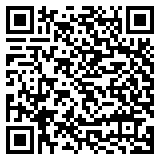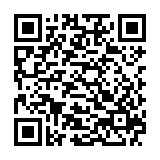Welcome to a linguistic adventure where we unravel the fascinating world of time travel through language! In this journey, we will explore how linguistics unveils the cultural temporalities embedded in different languages, offering us a unique perspective on how societies perceive and express time.
The Time Machine of Language
Imagine language as a time machine, transporting us across centuries and cultures with each word and expression. Just like different vehicles can take us to various destinations, languages carry us through diverse temporal landscapes, reflecting the values, priorities, and perceptions of time in their respective cultures.
Past, Present, and Future: Linguistic Tenses
One of the first stops on our linguistic time travel is the realm of verb tenses. Languages structure time differently, showcasing unique ways of expressing past, present, and future events. For example:
- English uses auxiliary verbs like “have” and “will” to indicate past and future actions, respectively.
- Romance languages like Spanish and French have distinct conjugations for different tenses, highlighting subtle nuances in time.
- In Mandarin Chinese, time markers such as “昨天” (zuótiān – yesterday) and “明天” (míngtiān – tomorrow) play a crucial role in temporal expression.
By delving into these linguistic nuances, we uncover how cultures conceptualize time and weave it into their daily communication.
Cultural Temporalities: Monochronic vs. Polychronic
Our linguistic time travel also reveals contrasting cultural attitudes towards time. Like many Western societies, monochronic cultures emphasize punctuality, efficiency, and linear progression. In these cultures, time is often seen as a valuable resource to be managed carefully.
On the other hand, polychronic cultures, prevalent in many Asian, African, and Latin American societies, prioritize flexibility, relationships, and the fluidity of time. Here, schedules are more flexible, and multitasking is common, reflecting a holistic view of time intertwined with social interactions.
Temporal Lexicons: Words That Capture Time
Languages are rich tapestries woven with words that capture unique temporal concepts. For instance:
- The German word “Zeitgeist” embodies the spirit of a particular time period, reflecting collective beliefs and attitudes.
- In the Inuit language, multiple words describe different types of snow, highlighting the temporal intricacies of their environment.
These linguistic gems not only enrich our vocabulary but also offer glimpses into how cultures perceive and articulate time-bound phenomena.
Rituals and Celebrations: Markers of Cultural Temporalities
Our journey wouldn’t be complete without exploring how languages mark temporal milestones through rituals and celebrations. From New Year festivities to seasonal ceremonies, languages resonate with cultural rhythms, honoring the passage of time and its cyclical nature.
Rituals and celebrations serve as cultural timekeepers, preserving traditions, values, and collective memories across generations. These temporal markers transcend mere dates and events through language, embodying deeper meanings, connections to nature, and insights into human perceptions of time’s passage.
Wrapping Up
As we conclude our linguistic time travel, we’ve witnessed how language serves as a portal to understanding cultural temporalities. Each word, tense, and expression echoes history, tradition, and societal values, inviting us to appreciate the diverse ways humans navigate the timeless journey of time.
So, next time you utter a word or phrase, remember that you’re not just speaking; you’re embarking on a linguistic odyssey through time and culture!





0 Comments